Click here to learn more about the Residential Buildings Committee (RBC)
System Design
Understanding the principles and applications of HVAC design is crucial for creating energy-efficient and comfortable residential buildings. This section offers comprehensive resources to guide you through every aspect of HVAC design, from load calculations to duct sizing and beyond.
Load calculations:
Handbook of Fundamentals:
- Chapter 17 - Residential Cooling and Heating Load Calculations
Equipment:
HVAC Applications:
- Chapter 1 Residential Space Conditioning
HVAC Systems and Equipment:
- Chapter 1 HVAC System Analysis and Selection
- Chapter 4 Air Handling and Distribution
- Chapter 5 In-Room Terminal Systems
- Chapter 10 Small Forced-Air Heating and Cooling Systems
- Chapter 13 Hydronic Heating and Cooling
- Chapter 20 Room Air Distribution
- Chapter 25 Mechanical Dehumidifiers
- Chapter 29 Air Cleaners
- Chapter 34 Residential In-Space Heating Equipment
- Chapter 35 Chimney, Vent, and Fireplace systems
- Chapter 36 Hydronic Heat
- Chapter 41 Evaporative Cooling
- Chapter 48 Unitary Air Conditioners and Heat Pumps
- Chapter 49 Room Air Conditioners and PTACs
Key Concepts:
Handbook of Fundamentals:
- Chapter 9 Thermal Comfort
- Chapter 10 Indoor Environmental Health
Other Design Resources
The global HVAC systems market (commercial, industrial and residential) was valued at USD 130.5b in 2019. The residential segment accounted for a market share of more than 40.0% in 2019, driven by increasing urbanization, climate change, and government-led incentives and rebate programs. Source
Return to Top
Standards and Guidelines
ASHRAE offers a number of residential resources including relevant standards, guidelines, and educational guidance documents. Those resources are listed below with links to the ASHRAE Bookstore where the resources may be purchased. Many of these resources are also available as free downloads or with free read-only access.
To learn more about ASHRAE’s free resources: Click Here
Essential Resources from ASHRAE
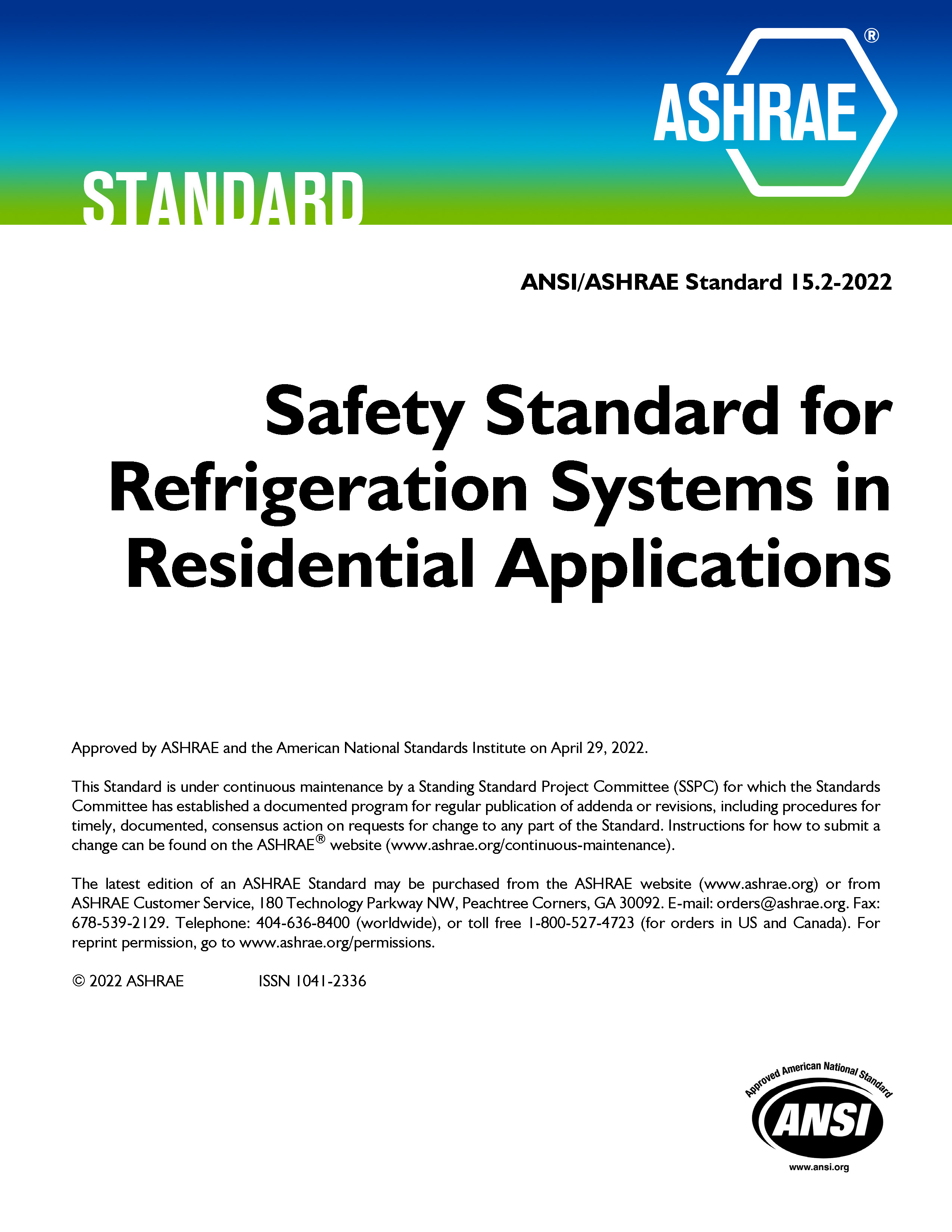
Standard 15.2, Safety Standard for Refrigeration Systems in Residential Applications (ANSI Approved)
ASHRAE Standard 15.2 is a safety standard designed to accommodate the use of A2L-classified refrigerants in low-rise residential applications and is intended for use by manufacturers, installers, contractors, service technicians, building code officials, and others.
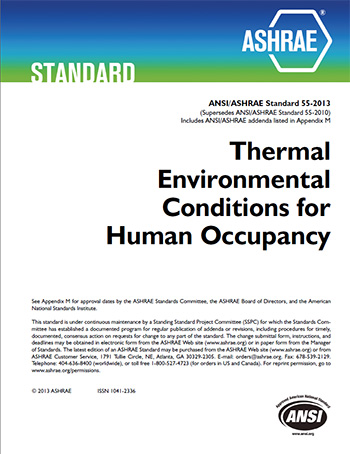
ANSI/ASHRAE Standard 55 -- Thermal Environmental Conditions for Human Occupancy
ASHRAE Standard 55 specifies conditions for acceptable thermal environments and is intended for use in design, operation, and commissioning of buildings and other occupied spaces.
Discover More about Standard 55
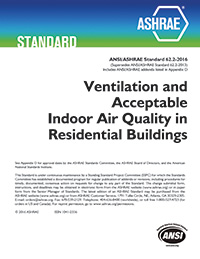
ANSI/ASHRAE Standard 62.2 -- Ventilation and Acceptable Indoor Air Quality in Low-Rise Residential Buildings
This standard defines the roles of and minimum requirements for mechanical and natural ventilation systems and the building envelope intended to provide acceptable indoor air quality in low-rise residential buildings. Discover More about Standard 62.2

ANSI/ASHRAE/IES Standard 90.2 -- High-Performance Energy Design of Residential Buildings
This standard provides minimum requirements for the energy-efficient design of residential buildings, including new dwelling units, new portions of dwelling units and their systems, and new systems and equipment in existing dwelling units.
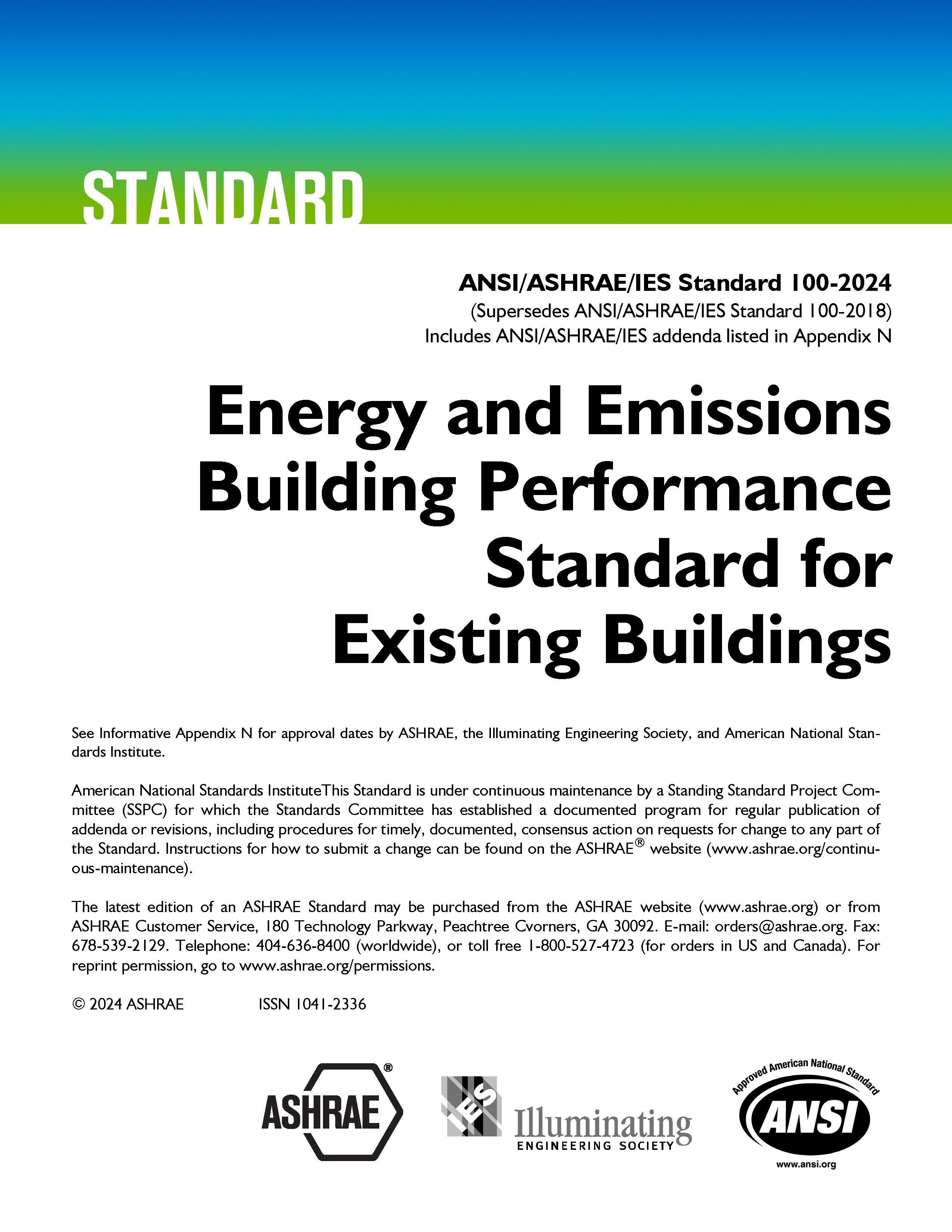
Standard 100-2024 -- Energy and Emissions Building Performance Standard for Existing Buildings (ANSI/IES Approved)
This standard is a code-ready building performance standard that provides processes and procedures for reducing energy consumption and carbon emissions through improved energy efficiency and performance of all types of existing buildings, including residential, commercial, institutional, and industrial. Standard 100 provides owners, utility companies, and government at every level a verifiable process that can reduce energy costs and support tax incentives, rebates, and related programs.

Standard 160-2021 -- Criteria for Moisture-Control Design Analysis in Buildings (ANSI Approved)
This standard specifies performance-based design criteria for predicting, mitigating, or reducing moisture damage to the building envelope, materials, components, systems, and furnishing - depending on climate, construction type, and HVAC system operation. These include criteria for selecting analytic procedures, criteria for inputs, and criteria for evaluation and use of outputs.
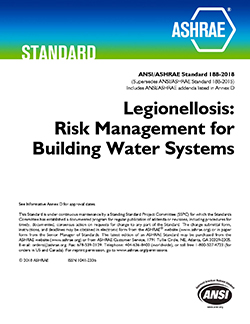
Standard 188-2021 -- Legionellosis: Risk Management for Building Water Systems (ANSI Approved)
This standard establishes minimum legionellosis risk management requirements for building water systems. Included in this publication are a description of environmental conditions that promote the growth of Legionella, and informative annexes and bibliography with suggestions, recommendations, and references to additional guidance.
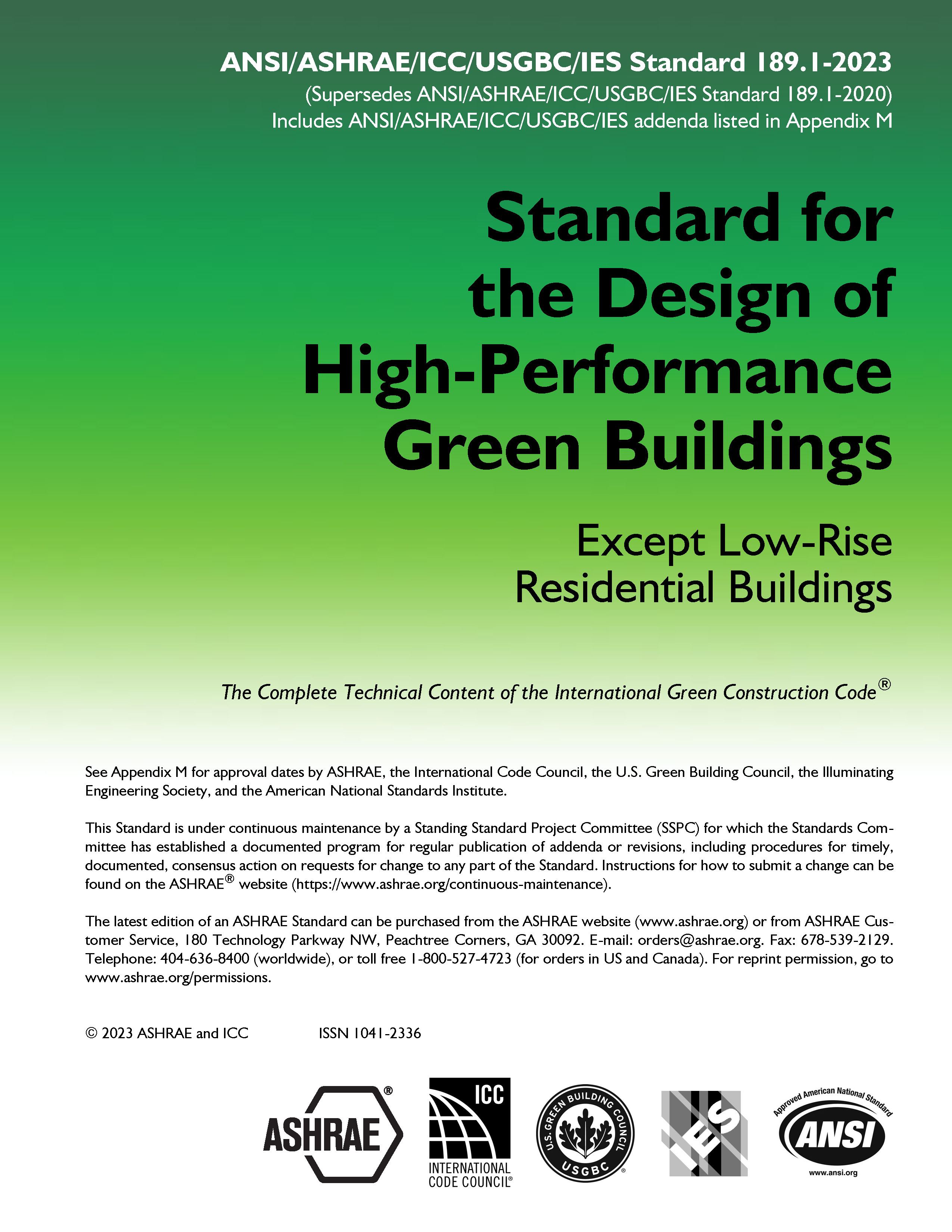
Standard 189.1-2023 -- Standard for the Design of High-Performance Green Buildings Except Low-Rise Residential Buildings (ANSI Approved; ICC, USGBC and IES Co-sponsored)
This standard provides total building sustainability guidance for designing, building, renovating, and operating high-performance green buildings. From site location to energy use to recycling, this standard sets the foundation for green buildings by addressing site sustainability, water use efficiency, energy efficiency, indoor environmental quality (IEQ), and the building's impact on the atmosphere, materials and resources.
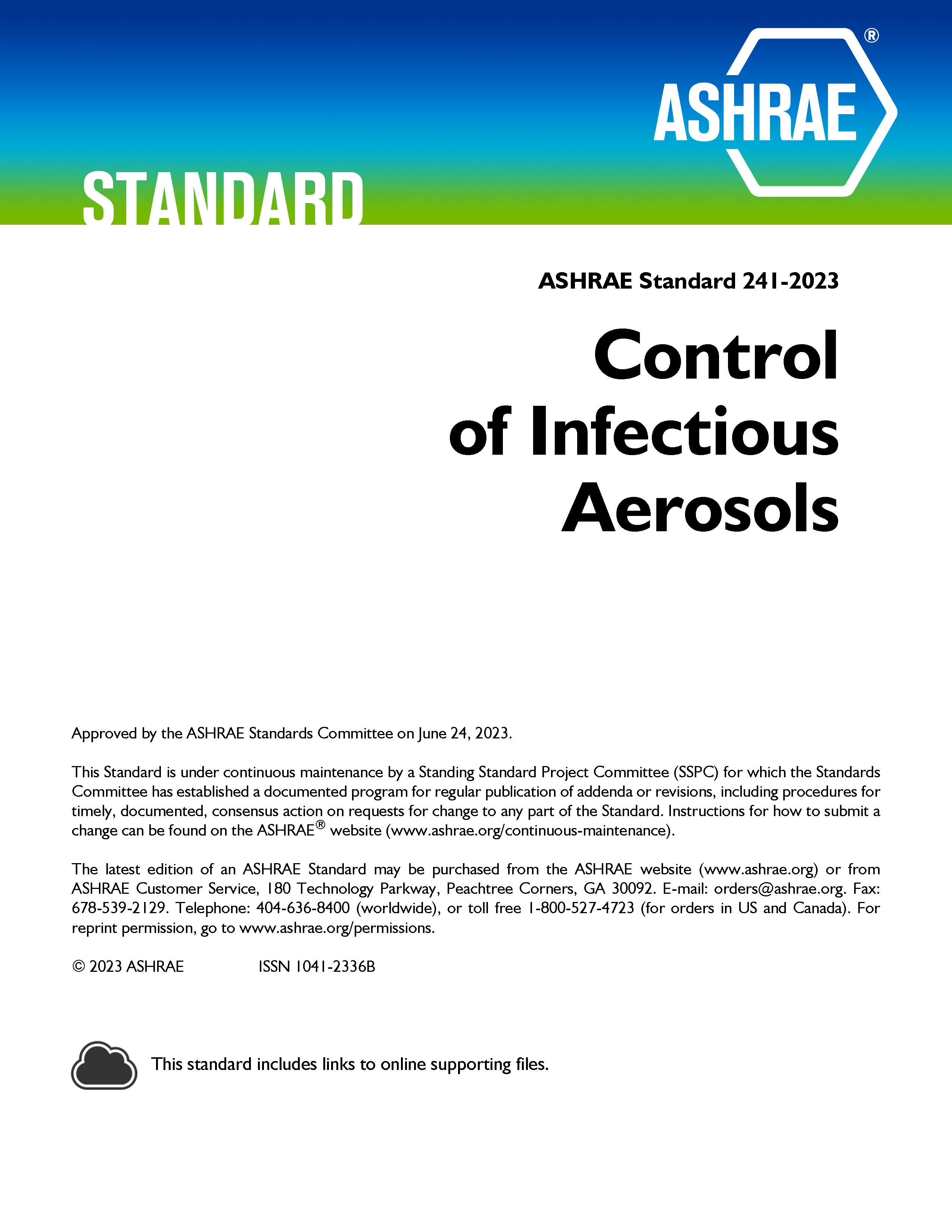
Standard 241-2023 -- Control of Infectious Aerosols
This standard establishes minimum requirements for controlling infectious aerosols and reducing the risk of disease transmission in new and existing buildings. Included are requirements for both outdoor air system and air cleaning system design, installation, commissioning, operation, and maintenance to reduce exposure to infectious aerosols.
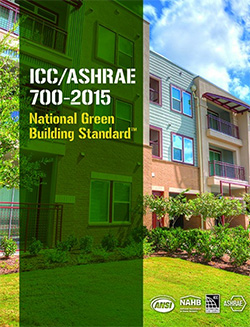
ICC 700 National Green Building Standard(TM)
This standard includes everything needed to design, construct or remodel any residential project to the most current sustainable and green building criteria available - all under one roof!
Return to Top
Method of test
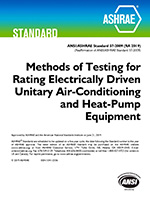
Standard 37-2009 (RA 2019) -- Methods of Testing for Rating Electrically Driven Unitary Air-Conditioning and Heat Pump Equipment (ASHRAE/ANSI Approved)
This standard provides test methods for determining the cooling capacity of unitary air-conditioning equipment and the cooling or heating capacities, or both, of unitary heat-pump equipment.The 2019 reaffirmation of Standard 37 includes no substantive changes.
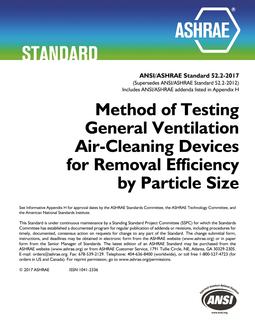
Standard 52.2-2017 -- Method of Testing General Ventilation Air-Cleaning Devices for Removal Efficiency by Particle Size (ANSI Approved)
This standard establishes a method of laboratory testing to measure the performance of general ventilation air-cleaning devices in removing particles of specific diameters.
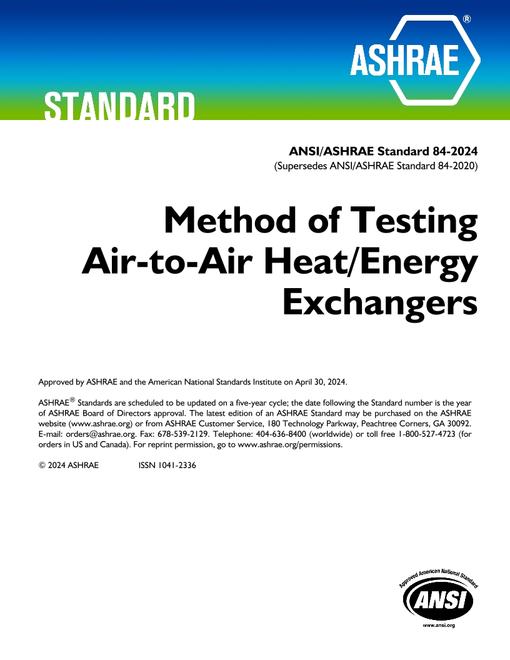
Standard 84-2024 -- Method of Testing Air-to-Air Heat/Energy Exchangers (ANSI Approved)
This standard establishes a method of laboratory testing to measure the performance of general ventilation air-cleaning devices in removing particles of specific diameters.
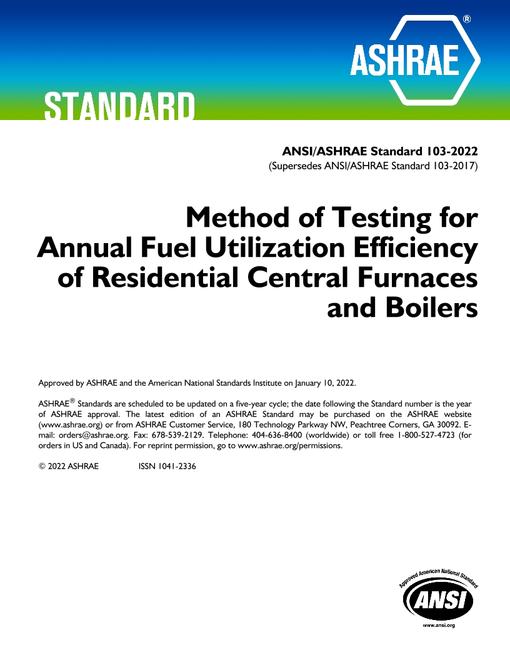
Standard 103-2022 -- Method of Testing for Annual Fuel Utilization Efficiency of Residential Central Furnaces and Boilers (ANSI Approved)
This standard is an industry standard specifying the method of testing for determining the annual fuel utilization efficiency of residential and light commercial furnaces and boilers.

Standard 118.2-2022 -- Method of Testing for Rating Residential Water Heaters and Residential-Duty Commercial Water Heaters (ANSI Approved)
This standard provides test procedures for rating the efficiency and hot-water delivery capabilities of directly heated residential water heaters and residential-duty commercial water heaters.
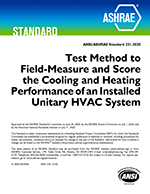
Standard 221-2020 -- Test Method to Field-Measure and Score the Cooling and Heating Performance of an Installed Unitary HVAC System (ANSI Approved)
This standard prescribes a field evaluation and test method to measure andscore the performance, in terms of delivered cooling or heating capacity or cooling efficiency, of an installed unitary HVAC system.
Return to Top
Guidelines

Advanced Energy Design Guide for Multifamily Buildings: Achieving Zero Energy
Advanced Energy Design Guide for Multifamily Buildings—Achieving Zero Energy is the third in a series of guides for achieving zero energy and is tailored to the design and creation of zero energy multifamily residential buildings. It builds on the popular 50% AEDG series with new and updated recommendations on energy efficiency along with guidance about on-site renewable energy sources.
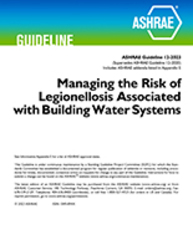
Guideline 12-2023: Managing the Risk of Legionellosis Associated with Building Water Systems
ASHRAE Guideline 12 provides information and guidance on the control of legionellosis associated with building water systems, and provides guidance useful in the implementation of ANSI/ASHRAE Standard 188, Legionellosis: Risk Management for Building Water Systems.

ASHRAE Standard 62.2 User's Manual
ASHRAE Guideline 12 provides information and guidance on the control of legionellosis associated with building water systems, and provides guidance useful in the implementation of ANSI/ASHRAE Standard 188, Legionellosis: Risk Management for Building Water Systems.
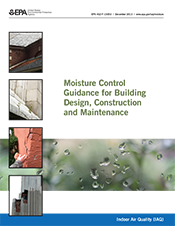
Moisture Control Guidance for Building Design, Construction and Maintenance
Moisture causes problems for building owners, maintenance personnel and occupants. Many common moisture problems can be traced to poor decisions in design, construction or maintenance. The American Society of Heating, Refrigerating and Air-Conditioning Engineers (ASHRAE) notes that, more often than not, the more serious problems are caused by decisions made by members of any of a number of different professions. However, such problems can be avoided with techniques that are based on a solid understanding of how water behaves in buildings.

Residential Indoor Air Quality Guide: Best Practices for Acquisition, Design, Construction, Maintenance and Operation
This guide addresses single- and multifamily dwellings, unrestricted by building size or HVAC system type. It was written by experts in residential IAQ and presents best practices to achieve excellent IAQ. It provides information and tools that residents, home designers, and builders can use to integrate IAQ into dwellings while addressing budget constraints and other functional requirements.
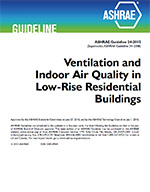
ASHRAE Guideline 24 -- Ventilation and Indoor Air Quality in Low-Rise Residential Buildings
This guideline provides information on how to achieve good IAQ beyond minimum requirements. It provides information relevant to ventilation and IAQ on envelope and system design, material selection, commissioning and installation, and operation and maintenance.
Return to Top
Articles
The Residential Buildings Committee has identified a number of ASHRAE articles and columns that may be of interest to the residential market. Those articles are listed below with links to the ASHRAE Bookstore where the articles may be purchased. The articles are also available for free download to ASHRAE members and subscribers through the ASHRAE Technology Portal.
To access the Technology Portal: Click Here
Past Residential Content in ASHRAE Journal
>> Columns (Residential Applications/Residential Buildings) and Other Columns
>> Residential Articles:
>> Past Residential Content from High Performance Buildings:
Return to Top
Distinguished Lecturer Program
The ASHRAE Distinguished Lecturers (DL) Program provides ASHRAE Chapters with lecturers equipped to speak on relevant subjects of interest to ASHRAE members and guests without incurring huge costs. The DL program includes a number of residential topics. To learn more about the DL program click here.
Return to Top